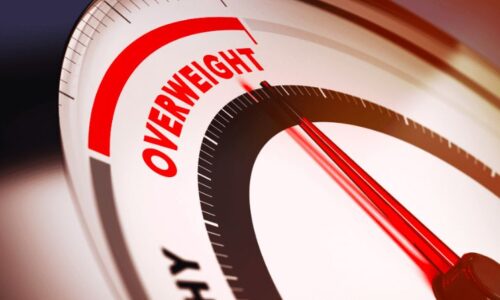What is a good formula for losing weight? |

We occasionally receive messages from eDoc clients expressing frustration with not being able to lose weight, despite eating a low-calorie diet and getting regular exercise. Once issues such as hypothyroidism are ruled out, the cruel reality is that weight loss occurs only when the number of calories that we burn exceeds the number that we consume. We burn calories through our basal metabolism, activities of daily living, and exercise. Basal metabolism or basal metabolic rate (BMR) refers to the number of calories that we consume in order to maintain our current weight and to support certain “basal” functions, such as brain activity, breathing, and pumping blood throughout the body. The BMR varies from individual to individual because of differences in body weight, height, gender, and age. By knowing our basal metabolic rate, we can come closer to being able to estimate the maximum number of calories that we can eat and still lose weight.
One way of estimating the daily caloric intake is by applying the Harris-Benedict Principle. This equation takes into consideration those factors (age, height, weight, etc.) that affect basal metabolism, as well as factoring in the person’s activity level. This equation will be fairly accurate in all but the very muscular (under-estimates calorie needs) and the very fat (over-estimates calorie needs). Here’s how the equation works:
1. As mentioned, the BMR varies depending on whether you are a man or a woman:
- For men, the BMR equals 66 + (6.23 times your weight in pounds) + (12.7 times your height in inches) – (6.8 times age in years).
- For women, the BMR equals 655 + (4.35 times your weight in pounds) + (4.7 times your height in inches) – (4.7 times your age in years).
- As an example, if you are a 48 year old woman whose weight is 168 pounds and height is 5 ft. 6 inches, the calculations would go as follows:
- BMR = 655 + (4.35 X 168) + (4.7 X 66) – (4.7 X 48)
- BMR = 655 + 730.8 + 310.2 – 225.6
- BMR = 1470.4 calories per day. This is the number of calories that you could eat if you were completely sedentary and that would support your current weight and basal metabolism. In other words, you would neither gain nor lose weight.
2. Since almost everyone is active to some degree, the next step is to factor in your estimated activity level. This is done by multiplying your BMR by an activity factor (these are the same for men and women). They are as follows:
- Sedentary = BMR x 1.2 (Office Job – Not very active)
- Lightly Active = BMR x 1.375 (1-3 days/wk light exercise)
- Moderately Active = BMR x 1.55 (moderate exercise 3-5 days/wk)
- Very Active = BMR x 1.725 (intense exercise 5-7 days/wk)
- Athletic = BMR x 1.9 (Hard exercise daily. Active job. Training for sports contest/competition)
- So, keeping with the previous example, in a moderately active woman whose BMR is 1470 calories, she would burn approximately 2279 (1470 X 1.55) calories in a day.
Now comes the weight loss part. In order to lose weight, this individual would have to consume fewer than 2279 calories per day or would have to increase her exercise level so that she was burning more than 2279 calories per day. In order to lose a pound of weight a week, our subject would need to create a calorie deficit of 500 calories per day or approximately 3500 calories per week. She could do this by burning an extra 250 calories and cutting back by 250 calories from her diet or any other combination that will result in 500 fewer calories. Obviously, one day’s worth of dieting or a particularly vigorous exercise session will not make much difference. Weight loss typically requires that you create a caloric deficit for a longer period of time to be successful.
The Harris-Benedict principle is not exact, but does provide a more accurate estimate of daily caloric expenditure than many other methods. It is best applied with the use of diet and exercise diary to keep track of the number of calories that are being consumed as well as the number of calories expended through exercising.
If you have any more questions just Ask Hanna, our health advisors are here to help.
Image: ©Shutterstock / Nok Lek








